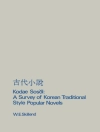This edited book brings together scholarly chapters on linguistic aspects of humour in literary and non-literary domains and contexts in different parts of the world. Previous scholarly engagements and theoretical postulations on humour and the comic provide veritable resources for reexamining the relationship between linguistic elements and comic sensations on the one hand, and the validity of interpretive humour stylistics on the other hand. Renowned Stylistics scholars, such as Michael Toolan, who writes the volume’s foreword against the backdrop of nearly four decades of scholarly engagement with stylistics, and Katie Wales, who in this volume engages with Charles Dickens, one of the most eminent satirists in English literature, as well as many other European and African authors who have worked ceaselessly in the area of humour and language, weigh in on the topic of language and humour in this volume. Together, they provide a variety of interesting perspectives on the topic, deploying different textual sources from different media and from different regions of the world. Part of the book’s offering includes integrative stylistic approaches to humour in African, European and American written texts, examinations of social media and political humour in Nigeria, Cameroon and Zimbabwe, pragmatics and humorous stance-taking, incongruity as comedy in works of fiction, and a unified levels of linguistic analysis approach to the investigation of humour. This book will be of interest to academics and students of Linguistics, Stylistics, Communications and Media Studies, and Humour Studies. Taiwo Oloruntoba-Oju is a Professor in the Department of English at the University of Ilorin in Nigeria
Содержание
1 “Shamuz, Shamuz, Everything Is with Shamuz”—Making Sense of Humour Theory and Stylistic Enquiry: An Overview — Taiwo Oloruntoba-Oju.- Part I Humour Theory and Literary Texts in European, American and African Contexts.- 2 Unifying the Humour Theories: A Stylistic Approach — Faye Chambers.- 3 The Rasch Model in Humour Research — Matthias Springer.- 4 Humour and the “Mooreeffoc Effect”: Inversion and Subversion in Charles Dickens’ Holiday Romance — Katie Wales.- 5 The Uses of Humour in Barbara Kimenye’s Moses Series — Danson Sylvester Kahyana.- 6 Ridicule and Scorn in David Sedaris’s “Standing By”: The Responsibility of Humour — Lynn Blin.- 7 Satire, Humour, Language and Style in Nigerian Literature — Taiwo Oloruntoba-Oju.- Part II Language, Humour, Society and Media in Africa.- 8 The Linguistic Style of Nigerian Mediated Comedies in English — Ibukun Filani.- 9 Humour and Language in the Era of Crisis: A Sociopragmatic Analysis of Cameroonian Women’s Humour Styles During the Anglophone Crisis — Comfort Beyang Oben Ojongnkpot.- 10 Humour and the Many Worlds of Nigerian Political Cartoons — Oyinkan Medubi.- 11 Toward the Analysis of Online Supplication and Interactional Stance-Taking — Ibukun Osuolale Ajayi.- 12 A Preliminary Sketch on Intertextuality in Nigerian Stand-Up Comedy — Ibukun Filani and Catherine Olutoyin Williams.- 13 Pragmatic Acts of Humour in Selected Series of Helen Paul’s Alhaja Donjasi Comedy Skits — Monsurat Aramide Nurudeen.- 14 An Analysis of Humour Style in Nigerian Situation Comedy — Lekan Christopher Olawale.
Об авторе
Taiwo Oloruntoba-Oju is a Professor in the Department of English at the University of Ilorin, Nigeria.












